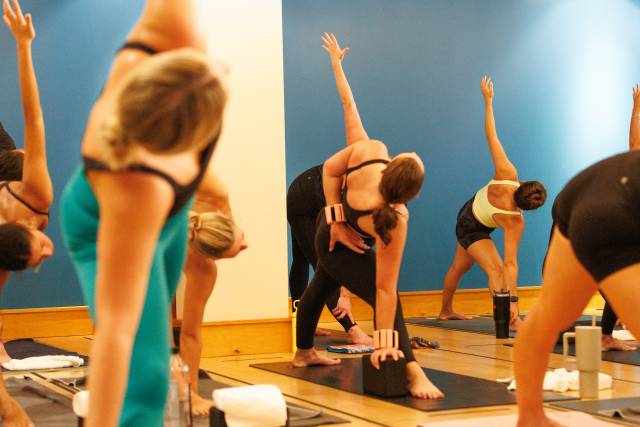In our hyper-connected world, screens have become an integral part of our daily lives. From smartphones to laptops, tablets to smart TVs, we’re constantly surrounded by digital devices. While it’s just about impossible to totally ignore our phones, an overload of screen time can lead to various physical and mental health issues. This is where the concept of a digital detox comes into play, coupled with mindfulness techniques to help us regain control over our digital habits.
Digital Overload, Anxiety & Mental Well-Being
Constant exposure to screens can have a significant impact on our health and daily functioning. Many people experience eye strain and vision problems due to prolonged screen use, while the blue light emitted by devices can disrupt our natural sleep patterns. Physical discomfort, such as neck and back pain, often results from poor posture while using devices.
Beyond the physical effects, digital overload can take a toll on our mental well-being and cognitive abilities. Many individuals notice a decreased attention span and reduced productivity when constantly switching between digital tasks. The constant influx of information and notifications can lead to increased stress and anxiety levels. Moreover, excessive screen time can diminish our face-to-face social interactions, potentially affecting our interpersonal relationships. Perhaps most concerning is the impact on our ability to focus, as constant digital distractions can make it challenging to concentrate on single tasks for extended periods.
Recognizing these impacts is the first step towards making a positive change in our digital habits. By implementing mindfulness techniques, we can create a healthier relationship with technology and improve our overall quality of life.
Mindfulness Techniques for Reducing Screen Time
Mindfulness is the practice of being fully present and engaged in the current moment. When applied to our digital habits, it can help combat depression and anxiety and help us become more aware of our screen time and make conscious choices about our technology use. Here are some effective mindfulness techniques to help you reduce screen time and create a more balanced digital life:
Practice the STOP Technique. The STOP technique is a simple yet powerful mindfulness exercise that can be applied to your digital habits. It involves four steps: Stop what you’re doing, Take a few deep breaths, Observe your thoughts, feelings, and surroundings, and Proceed with intention. Whenever you feel the urge to reach for your device, pause and go through these steps. This brief moment of mindfulness can help you assess whether you truly need to use your device or if you’re acting out of habit.
Implement Mindful Transitions. Create mindful transitions between your digital and non-digital activities. Before picking up your device or sitting down at your computer, take a moment to set an intention for your screen time. Ask yourself about the purpose of this screen time, how long you intend to spend on this activity, and how you will feel after completing this task. By setting clear intentions, you’re more likely to use your screen time purposefully and avoid mindless scrolling or browsing.
Practical Mindfulness Techniques for a Digital Detox
While mindfulness techniques form the foundation of a successful digital detox, implementing practical strategies can further support your efforts to reduce screen time. Consider creating tech-free zones in your home, such as the bedroom or dining room, to establish physical boundaries and encourage more face-to-face interactions. Setting specific screen time hours for checking emails, social media, or other non-essential digital activities can help prevent constant interruptions and allow for more focused work and leisure time.
Utilize screen time tracking apps, which are often built into smartphones, to become more aware of your digital habits and set limits for specific apps or categories. Practice digital sabbaticals by starting with short periods of complete disconnection from digital devices and gradually increasing the duration as you become more comfortable being offline. Engage in alternative activities that don’t involve screens, such as reading physical books, practicing art, exercising outdoors, or learning a new skill.
To reduce eye strain, implement the 20-20-20 rule: every 20 minutes, take a 20-second break to look at something 20 feet away. This serves as a reminder to take regular breaks from screens. Another helpful strategy is to use grayscale mode on your devices, which can make your screen less visually appealing and reduce the dopamine hit associated with colorful app icons and notifications.
The Long-Term Benefits of Mindful Screen Time
As you incorporate mindfulness techniques and practical strategies into your daily routine, you’ll likely notice several positive changes in various aspects of your life. Your focus and productivity may improve as you reduce distractions and become more intentional with your screen time, making it easier to concentrate on tasks and complete them efficiently. Your relationships may be enhanced as you spend less time on devices and engage in more meaningful face-to-face interactions, strengthening connections with friends and family.
You might experience better sleep quality by reducing screen time, especially before bed, leading to improved sleep patterns overall. Mindful use of technology can help alleviate the constant pressure to stay connected and respond immediately to notifications, potentially reducing stress and anxiety levels. Time away from screens allows your mind to wander and engage in creative thinking, potentially leading to new ideas and insights.
Your physical health may improve with less screen time, often correlating with increased physical activity, better posture, and reduced eye strain. Regular practice of mindfulness techniques can lead to greater self-awareness, providing a deeper understanding of your thoughts, emotions, and behaviors, both online and offline.







